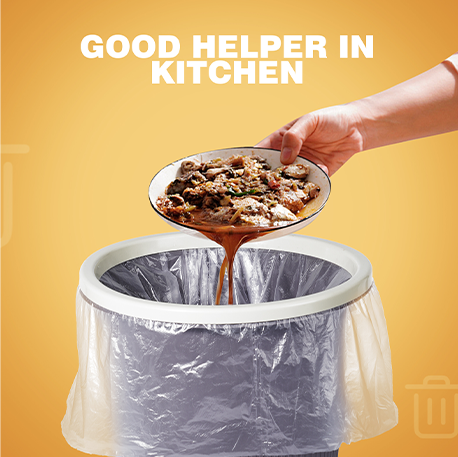The Environmental Impact and Benefits of Biodegradable Plastic Bags in Modern Society
The Rise of Bioplastic Bags A Sustainable Alternative
In an era marked by escalating environmental concerns, the quest for sustainable solutions is more pressing than ever. Among various innovations, the emergence of bioplastic bags presents a promising alternative to traditional plastic bags, which have become a significant pollutant in our ecosystems. This article delves into the nature of bioplastic bags, their benefits, and the challenges they face in becoming a mainstream solution.
Understanding Bioplastics
Bioplastics are derived from renewable biomass sources, such as vegetable fats, oils, and starch, as opposed to conventional plastics, which are primarily made from petrochemicals. This fundamental difference is what positions bioplastics as a more environmentally friendly option. Bioplastic bags can be fully biodegradable or compostable, meaning they decompose through the action of living organisms, thereby reducing their impact on landfills and oceans.
One of the most common types of bioplastics used in bag production is polylactic acid (PLA), which is made from fermented plant starch, typically sourced from corn or sugarcane. Another example is polyhydroxyalkanoates (PHA), a type of biopolymer produced by microorganisms through the fermentation of organic materials. Both of these materials offer significant advantages over traditional plastics, but they also come with their own sets of challenges.
Environmental Benefits
The benefits of adopting bioplastic bags are manifold. Firstly, bioplastic bags significantly reduce carbon footprint. The production process of bioplastics generally emits fewer greenhouse gases compared to conventional plastics. Moreover, because they are derived from renewable resources, they contribute to a circular economy, where materials are used, recycled, and reused rather than disposed of.
Secondly, they alleviate the issue of plastic pollution. The proliferation of single-use plastic bags has been a catastrophic environmental concern. Millions of tons of plastic waste enter oceans each year, harming marine life and ecosystems. Bioplastic bags, designed to break down more quickly and efficiently, present a solution to this growing problem. When disposed of properly, they can minimize the environmental footprint, contributing positively to wildlife and ecosystems.
bioplastic bags

Economic Viability and Consumer Demand
The shift towards bioplastic bags is not only an environmental necessity but also an economic opportunity. As public awareness about plastic pollution grows, consumers are increasingly demanding alternatives that align with their values. Retailers and manufacturers are starting to respond to this demand by integrating bioplastic bags into their supply chains. This transition fosters innovation and job creation within the green technology sector.
Moreover, governments around the world are implementing legislation aimed at reducing plastic waste, further bolstering the market for bioplastics. For example, several countries have already banned single-use plastics or imposed taxes on their use, incentivizing the adoption of more sustainable materials. This regulatory environment signals a definitive shift towards a more sustainable future.
Challenges Ahead
Despite their advantages, bioplastic bags face several challenges that hinder their widespread adoption. One notable issue is the confusion surrounding the terms biodegradable and compostable. Many consumers may mistakenly believe that any bioplastic bag will break down in a regular landfill, which is not always the case. For effective degradation, specific conditions such as industrial composting facilities are needed. Without these facilities, the benefits of bioplastic bags may not be fully realized.
Additionally, the cost of producing bioplastics tends to be higher than that of conventional plastics. Although prices are gradually decreasing as technology advances, economic barriers still exist. For many businesses, transitioning to bioplastics may seem cost-prohibitive unless there are greater incentives or consumer commitment to sustainable practices.
Conclusion
In conclusion, bioplastic bags represent a vital step towards reducing plastic pollution and fostering sustainability. Their benefits, including lower carbon emissions and reduced environmental impact, are significant. However, to fully realize their potential, challenges such as consumer education, market competition, and production costs must be addressed. As we move towards a greener future, the collaboration between consumers, businesses, and governments will be pivotal in promoting the adoption of bioplastic bags and ensuring that they are not just an alternative, but a sustainable mainstay in our daily lives. The journey towards a plastic-free world requires innovative thinking, and bioplastics may just hold the key to a more sustainable tomorrow.
-
The Best Uses for Small Trash Bags in Daily LifeNewsJul.01,2025
-
Stylish Reusable Grocery Bags TrendsNewsJul.01,2025
-
Shipping Advantages of Using Bubble Envelopes BulkNewsJul.01,2025
-
How Compostable Mailing Bags Reduce Environmental ImpactNewsJul.01,2025
-
Environmentally - Friendly Bulk Poly MailersNewsJul.01,2025
-
Eco Friendly Custom Laminated Tote BagsNewsJul.01,2025
-
Have the freedom of customizing your custom mailers any way you want! Our dedicated packaging support will help deliver you the mailing experience you need to elevate your shipping experience to the next level! Start making a strong impression on your customers and stand out from your competitors! -
LIYA uses high quality raw materials which directly purchased from large enterprises domestic and overseas such as PetroChina, Sinopec, Sabic, Equate, ExxonMobil, Dow Chemical, Total, and Borouge, ensuring the price advantage and quality of the raw materials. -
LIYA uses high quality raw materials which directly purchased from large enterprises domestic and overseas such as PetroChina, Sinopec, Sabic, Equate, ExxonMobil, Dow Chemical, Total, and Borouge, ensuring the price advantage and quality of the raw materials.





